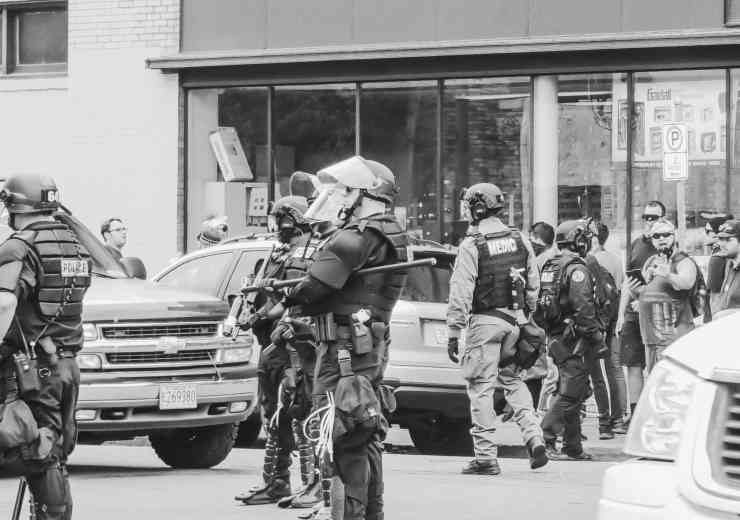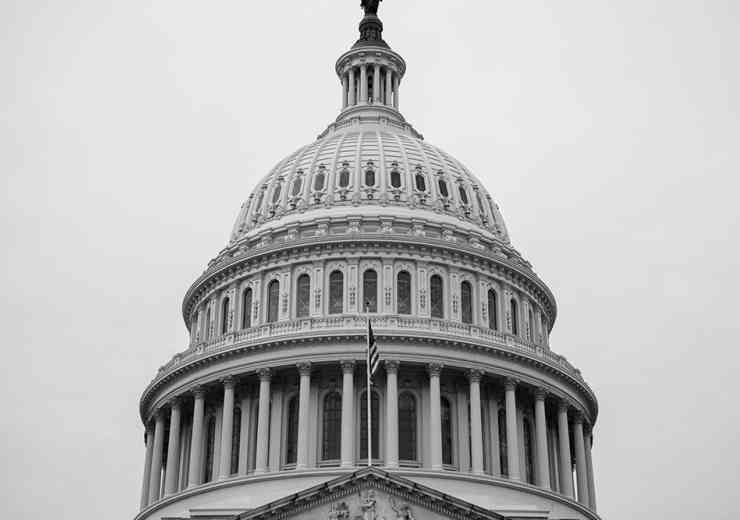
Ideology, extremism, radicalisation
Radicalisation in the Covid Era
Since the announcement of lockdown measures in countries around the world in early 2020, there have been persistent concerns amongst policymakers, academics, and the media that the Covid emergency and our response could exacerbate radicalisation. This could be either by creating vulnerabilities among a wider pool of individuals, by speeding up the process, or by intensifying it. Looking at the wave of anti-vaccine conspiracy theories that have grown over the past 18 months, which certainly seem to have many of the hallmarks of extremist narratives, this is an understandable position. Largely, the arguments that Covid may exacerbate radicalisation fall into two inter-related premises: firstly, the conditions brought about from Covid may create or intensify vulnerabilities to radicalisation; and, secondly, the extra hours that individuals spent online makes radicalisation more likely.
The first premise is, I believe, theoretically sound – although we have no idea of knowing whether it will actually come to pass. The second, however, plays into existing “online radicalisation” tropes, in which the role of the Internet is given undue primacy over other factors to the point in which it is given radicalising agency to “brainwash” users. Below, I take each premise in turn and argue that we should not simply assume that we are due for a wave of Covid radicalisation in the near future.
Premise 1: The conditions brought about from Covid may create or intensify vulnerabilities to radicalisation.
In an article earlier this year, Francesco Marone argues that the Covid emergency could breed or exacerbate states of mind or grievances that underlie violent extremism. This includes: having grief from personal losses and trauma, a disruption to daily life which potentially leads to isolation, psychological distress, high degrees of uncertainty. These conditions, he argues, could be ideal for recruitment to flourish. Similarly, Gary Ackerman and Haley Peterson offer ten potential outcomes for terrorism as a result of the pandemic, noting that it may increase susceptibility to radicalisation by fostering anxiety and paranoia, as well as anti-government attitudes via conspiracy theories. All of the factors shown by Marone and Ackerman and Peterson have been posited in the academic literature as having the potential to exacerbate this process. Scholars such as Haroro Ingram have argued that many factors such as uncertainty and a perception of crisis can be exploited by extremist groups, who blame the in-group’s plight specific out-groups, and in turn, advocating that violence is the only way to solve the crisis. The threat of this combination of factors is put succinctly by Paul Gill, who recently stated that: ‘You have the perfect storm with Covid going on, and lockdown, where you’ve got people unmoored from their families and friends and going through psychological distress…Lots of people get radicalised for a lot of different reasons but there is definitely a pool of people that have become more vulnerable as a byproduct of the lockdown.’
This argument is a compelling one; it draws from decades of radicalisation research and theory and follows a sound internal logic. However, at present, we have no idea if it is correct in practice. Marone discusses some case studies of violent extremist activity that can be linked to Covid, such as that of Corey H, who stormed the Canadian Prime Minister’s residence and ascribed several pandemic-related grievances. Despite a small number of individual case studies, there is still limited empirical research to suggest that the threat from radicalisation has become worse since lockdown. In fact, the early available evidence suggests the opposite. In their recent Terrorism Situation and Trend Report, Europol noted that arrests for terrorism had more than halved in 2020 from the previous year, noting that it was unclear whether this indicated reduced activity or changes in operational capacity. They note that the pandemic has not changed groups’ modi operandi, but instead they have weaved the pandemic into their longstanding narratives, concluding that judging the extent of Covid on terrorism is difficult to assess. Pantucci took stock of the one-year impact of Covid on terrorism in March 2021, concluding that the impact had been relatively limited. Assessing terrorism databases, he notes that by almost every metric, violence is down year-on-year between 2019 and 2020. Similarly, van Dongen notes that the last year has clearly created instances of extremism related to the pandemic, which may present a broader threat to society and democracy, but that there have presently been too few cases to ascribe it a threat as violent extremism. It should be underscored that it is too early to make firm conclusions here, but the early evidence suggests more promise than initial worst fears.
Premise 2: The extra hours that individuals spent online makes radicalisation more likely.
Almost immediately after lockdown measures were introduced, concerns arose over increased screen time exacerbating radicalisation. In March 2020, Nikita Malik argued in Foreign Policy that self-isolation may be an effective tool for halting the spread of Covid, but that it will increase the speed of radicalisation. She notes that greater access to fake news, conspiracy theories, and extremist materials would intersect with individuals’ attempts to make sense of the crisis. In June 2020, Wales’ most senior counter-terrorism police officer offered concerns that children that were exposed to extremist content on social media had become radicalised during lockdown. Similarly, Kevin Southworth, of the Metropolitan Police’s Counter-Terrorism Internet Referral Unit also expressed this concern, noting that the amount of flagged online terrorist content had increased by seven per cent (including a 43 per cent increase in far-right content) in 2020, suggesting that greater access to this content may lead to more individuals becoming radicalised. On the other side of the Atlantic, CNBC warned its readers that QAnon and anti-vaxxers had ‘brainwashed’ kids who were stuck at home, both via mainstream social media platforms such as Facebook, YouTube and TikTok, but also via their parents who themselves have fallen deep into conspiracy theories.
To be clear, there is no doubt that extremist groups and their supporters have attempted to exploit Covid for their own purposes. In their study on far-right German party AFD’s Twitter activity, Lella Nouri and Suraj Lakhani found that online supporters positioned themselves in discourse to ‘other’ out-groups and ineligible in-groups such as the German Government and the global establishment. CVE organisation Moonshot have released two reports which show an increase in white supremacist search terms within both the US and Canada. A recent study by Garth Davies, Edith Wu, and Richard Frank conducted an analysis to assess the aggregate change of daily posts before and after lockdown on seven fora of incel, far-right, far-left, and jihadist ideology. They found that the far-right and incel platforms did see a statistically significant increase, suggesting that these ideologies may be most suited for the exploitation of pandemic-related grievances.
Jihadist groups also incorporated Covid into their propaganda. Mina al-Lami of BBC Monitoring notes that the so-called Islamic State (IS) saw the pandemic as an opportunity to call for attacks, but in contrast al-Qaeda used it as an opportunity to bring non-Muslims into Islam. She notes that jihadists have typically framed the pandemic as a punishment from God and have taken the opportunity to gloat towards the West’s handling of the emergency. Similarly, Aymenn al-Tamimi conducted an analysis of IS’ al-Naba newsletter, observing that the group framed this period as an opportunity exploit the division among its enemies that have arisen because of the pandemic. In comparative research analysing jihadist and the far right, Milo Comerford and Jacob Davey found that both movements were opportunistically using the pandemic to advance their objectives. They note the overlap between far-right accelerationist and the apocalyptic jihadist narratives which both involve supporters hastening a crisis to advance the movement. They do observe differences, however, with the jihadists framing Covid as God’s work while the far-right ascribed blame to minority communities.
Despite the obvious increase in the supply of extreme content available to users, we should be sceptical that this will necessarily exacerbate radicalisation. As Maura Conway correctly asserts: ‘There is no yet proven connection between consumption of and networking around violent extremist online content and adoption of extremist ideology and/or engagement in violent extremism and terrorism.’ Although there are a handful of studies that have taken to studying this in an experimental format, this is still a field that is very much in its infancy. Moreover, studies have repeatedly demonstrated that although the Internet is important in contemporary cases of violent extremism, offline factors remain key. In their 2017 literature review on the topic of online radicalisation, Alexander Meleagrou-Hitchens and Nick Kaderbhai note that ‘the vast majority of authors argue that, while the Internet plays a facilitating role, in most cases the individual must still also be in contact with [face-to-face] networks.’ The question is not whether terrorists are using the Internet more (we all are) or whether they are exploiting events for their own narrative (they always do), but whether more time online – at the expense of face-to-face contact – will result in more cases of radicalisation. For this, I see little evidence and a strong reason to be sceptical given the current empirical basis.
To conclude, we should be concerned that the material conditions of Covid and society’s response to it could exacerbate radicalisation moving forward. There is a wealth of existing research which suggests that a global upheaval, anxiety, uncertainty, and stressors caused by the forthcoming economic downturn could spark vulnerabilities in potential violent extremists. However, we should be cautious of policymaker and media claims that the mere increase in access and supply of radical content will necessarily lead to more people becoming radicalised, or faster radicalisation trajectories. One might reasonably note that these two premises are not separate; that the combination of the increased vulnerabilities could push people towards new or existing radical communities online. However, given the current empirical research, we would expect these interactions to move into the offline domain before solidifying into violent action. Importantly, as Marone suggests, the forthcoming period will act as a global natural experiment; much of the research presented above is based on the pre-Covid era. If, for example, there is a strong relationship between more time spent online and increased radicalisation, then the data will begin to show this. As always, it will be important to keep an open mind as new trends appear.
Written by Joe Whittaker.
Joe Whittaker is a Research Fellow at ICCT. His research is focused on online radicalisation in the ‘Web 2.0’ era, evaluating whether the increased interactivity offered by social media has led to the Internet playing a greater role than previously thought. Joe is also affiliated with the Cyberterrorism Project in Swansea which, like ICCT, is internationally renowned and takes an interdisciplinary approach to different aspects of Terrorism Studies.
















